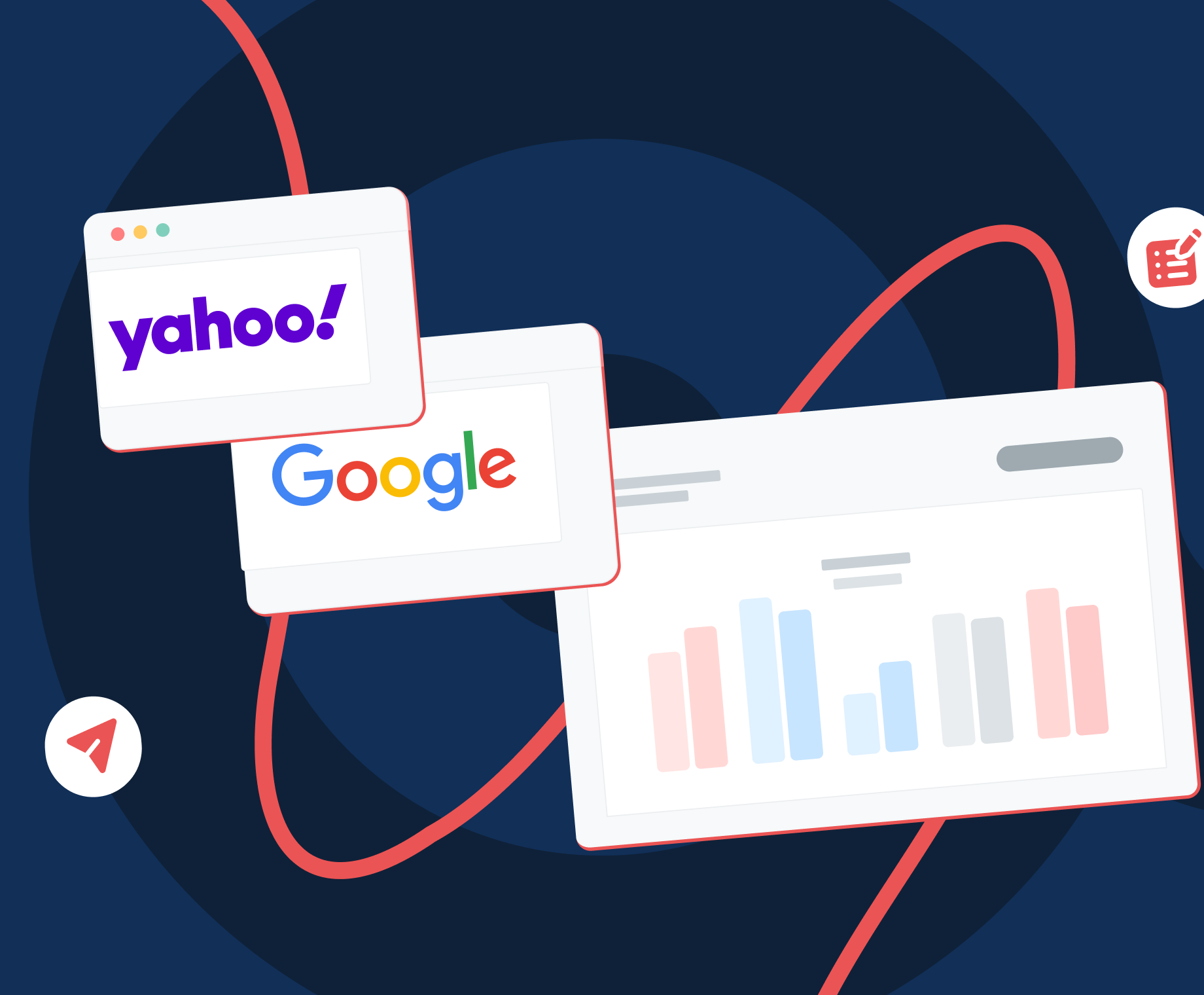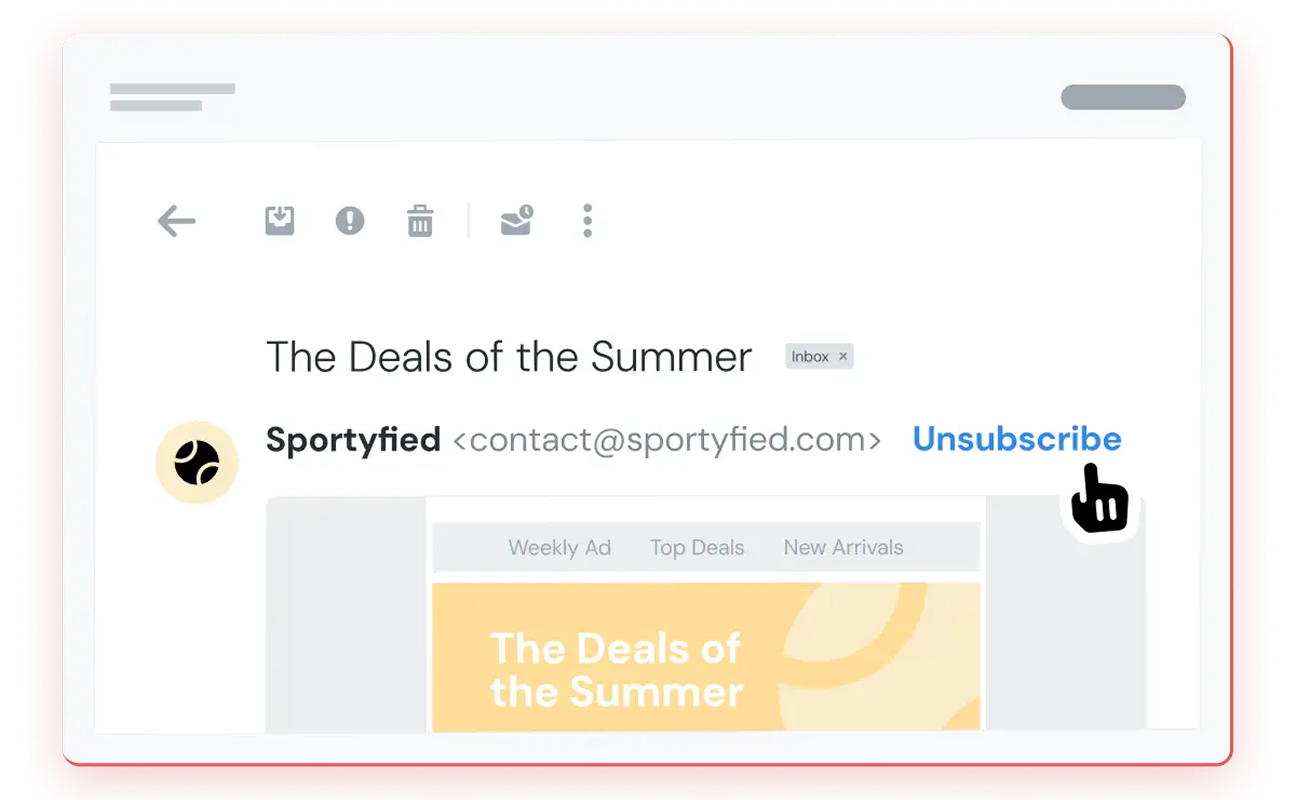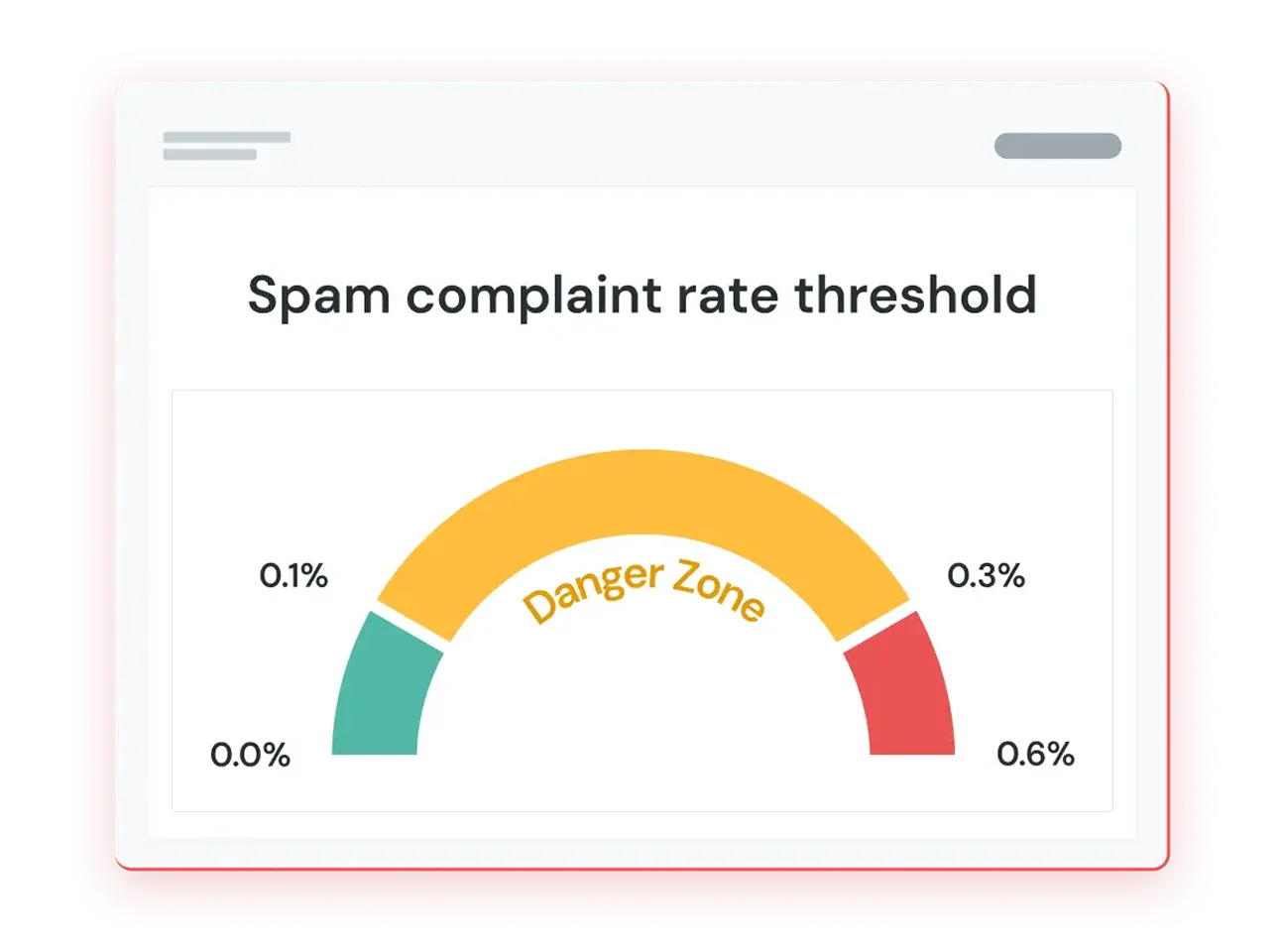Chapter 2
The year of Yahooglesoft

Chapter 2

of senders were at least somewhat familiar with the new requirements.
of senders who were aware of the new requirements made changes to their email programs in response.
of senders who made changes updated email authentication protocols.
of senders believe the new requirements are necessary or good for the future of email.
When a pair of tech powerhouses like Google and Yahoo make an announcement together, everyone tends to listen. That was the case in late 2023 when many senders learned they needed to meet stricter requirements to continue reaching Gmail and Yahoo Mail inboxes.
Like some sort of mailbox provider power couple, the requirements even earned a nickname. These so-called “Yahoogle” updates prompted plenty of email senders and platforms to make changes. But what was the point?
When the requirements first were released we polled senders on the new requirements and asked if they matter and how they impacted senders’ behaviors and opinions.
“The number is not 5,000, or 6,000, or 4,000. If you send 4,999 messages, you still have to follow the requirements. If you’re sending the same email to a lot of people, you’re a bulk sender.”

While Yahoogle felt like a big deal to some, there were others who never even got the news. For many with low email sending volumes, there wasn’t much to update. Gmail and Yahoo were mostly concerned with the practices of bulk email senders. Google defines a bulk sender as anyone sending around 5,000 messages per day to personal Gmail accounts.
Don’t get hung up on a specific number. According to Marcel Becker of Yahoo, any organization sending mass messages on a regular basis should consider itself a bulk sender.
Our global survey found 63% of all senders were at least somewhat familiar with the new sender requirements from Google and Yahoo.
While it’s true that more than a third of our survey respondents hadn’t heard of Yahoogle, the survey results show most bulk senders were aware of the updated requirements.
When we look at individual monthly send volumes, it’s clear that high-volume senders were more familiar with the changes. 84% of senders with a monthly volume greater than one million emails per month were at least somewhat familiar. The same goes for 81.5% of senders with monthly volumes between 100,000 and one million.
Even among those with the lowest send volumes, more than half of respondents (55%) had at least heard about the Yahoo and Google requirements.
Sinch Mailgun’s research also found that nearly half of all senders (49.5%) who knew about Yahoo and Google sender guideline updates made specific changes to their email programs in response. Those changes typically involved three things:
1. Implementing email authentication protocols (SPF, DKIM, and DMARC).
2. Enabling one-click unsubscribe functionality.
3. Maintaining spam complaint rates below a 0.3% threshold.
We’ll briefly explain each of these updates here. You’ll find more in Sinch Mailgun’s article on 2024 inbox protections.
The biggest changes for most senders involved Google and Yahoo’s requirements around email authentication protocols. That includes the following:
• Sender Policy Framework (SPF)
• DomainKeys Identified Mail (DKIM)
• Domain-based Message Authentication, Reporting and Conformance (DMARC)
Put simply, email authentication helps mailbox providers like Gmail and Yahoo verify sending domains and IP addresses as legitimate. Authentication protocols make it easier to stop email spoofing, which keeps potentially malicious messages from reaching inboxes.
Now all senders must use SPF or DKIM to authenticate their emails. However, the requirements are more specific for those sending mass email. Bulk senders must use both SPF and DKIM. Plus, they need to implement DMARC with a minimum policy of p=none.
We’ll dive deeper into email authentication in Chapter 2 of this report.

Another important bulk email sender requirement involves making it easy for contacts to unsubscribe. Gmail and Yahoo now require one-click unsubscribe functionality, and senders must follow through with those unsubscribe requests within two days.
One-click unsubscribe is directly connected to RFC 8058, which involves the List-Unsubscribe and List-Unsubscribe-Post email header fields.
RFC 8058 is an email standard that lets recipients unsubscribe without visiting a preference center or taking any further action. In Gmail, one-click unsubscribe appears to users like this:
With RFC 8058, recipients can easily unsubscribe from a brand’s emails. This is obviously beneficial to recipients, but it also benefits the sender. Making it easy to unsubscribe makes it less likely you’ll get user-generated spam complaints.
An advantage for Sinch Mailgun users is that we can automatically implement one-click unsubscribe for you, inserting the necessary headers and processing requests to be removed from your list. Learn more about unsubscribe handling and links.
Let’s get something straight about how recipients perceive spam… People complain about spam when emails are unwanted or intrusive. Even though you may have properly obtained consent, subscribers still choose to mark emails as spam if they are annoyed or it’s hard to unsubscribe.
Yahoo and Google sender requirements in 2024 stipulate a 0.3% threshold for the spam complaint rate. However, it is strongly suggested that bulk senders keep their spam complaint rate below 0.1% without ever reaching the 0.3% threshold.
What this means is once your spam complaint rate exceeds 0.1%, you’re entering a “danger zone.” If the complaint rate reaches 0.3%, you’re in real trouble. That’s when you’re at risk of being blocklisted.

Number of complaints / Number of emails received X 100 = Spam complaint rate %
It only takes one complaint out of 1,000 messages for a 0.1% spam rate. So, if you send 1,000 emails and get just three complaints, you’ve already hit the 0.3% threshold.
This may seem intense. But Yahoo’s Marcel Becker says this has been the policy of many mailbox providers for quite some time.
“This is nothing new. We have always looked at these spam rates and there are other companies out there also using 0.3%… If you’re a good sender, your spam rates will be well below 0.3%.”

The truth is, many of the new sender requirements from Google and Yahoo weren’t much more than best practices that companies should’ve been following already. That’s why not everyone was worried or needed to make changes to their email programs in 2024.
There is, however, a good reason that businesses would be concerned with being unable to reach personal Gmail accounts. When Sinch Mailgun surveyed global consumers for the Email and the customer experience report, we found that more than 72% of respondents used Gmail. Yahoo Mail took the third most popular spot with just over 20% saying they use the service.
Seeing how prevalent Gmail and Yahoo are among consumers, it was no surprise to see how senders responded when we asked them about their level of concern over the requirements. Close to 42% were somewhat concerned while 17% were very concerned. About 14% of senders in our survey were not concerned at all. 27% were mostly unconcerned. That reflects an approximate 60/40 split between those who were worried and those who weren’t.
Send volumes seemed to make little difference. However, senders in the middle of the pack did have slightly higher levels of concern. 21% of the two groups with monthly send volumes between 50,000 and 1-million emails per month said they were very concerned about meeting the new requirements.
While 59% of respondents were concerned about the new sender requirements, only 23% reported having any email deliverability challenges after Gmail and Yahoo began enforcing them.
Among the senders who were aware of Yahoo and Google’s new sender requirements for 2024, 49.5% made specific changes to their email programs. In some cases, that involved complying with the stricter rules. Many others adjusted their programs to avoid trouble with spam complaints.
By far, updates to email authentication were the most common change. Almost 80% of senders who made changes updated authentication practices due to Yahoogle.
About a third of senders (33.1%) took steps to ensure they were implementing RFC 8058 for one-click unsubscribe. 37% of senders who made changes began to closely monitor their spam complaint rate. Many of the other changes are also connected to avoiding spam complaints as well as maintaining a good sender reputation with Gmail and Yahoo:
• 35.8% increased list hygiene efforts.
• 19.2% began using Google Postmaster Tools.
• 18.6% adjusted their email sending frequency.
• 12.5% changed their email opt-in process.
All the results above reflect positive changes that will not only improve the inbox experience for recipients, but they’ll also support better inbox placement for the senders.
Among survey respondents who told us they were familiar with the requirements, nearly 64% had a generally positive reaction: 30.5% believe the changes are good for the future of email and another 33.2% believe they are necessary (even if they are a bit of a hassle).
Less than 7% of senders called the changes strict and unnecessary while 14% found them complex and confusing. Close to 18% had no opinion.
A higher percentage of bulk senders tend to agree with the decision to enforce these changes. 39% of respondents with the highest monthly send volumes (1 million+ per month) think the requirements are good for the future of email. Another 38% of those senders call the changes necessary. However, those positive sentiments gradually decrease with lower volume senders who may be less equipped to address technical tasks such as email authentication.
When Microsoft announced new sender requirements for Outlook.com, Hotmail.com, and Live.com in early 2025, the industry reaction wasn’t quite as loud as the Yahoogle shakeup of 2024. That’s partly because the core rules look awfully familiar and partly because Microsoft didn’t bring quite the same energy to enforcement.
Still, if you’re a high-volume sender, you’ll want to pay attention. Let’s break down what’s different about Microsoft’s approach and what you actually need to do about it.
Effective May 5, 2025, Microsoft began requiring authentication from senders delivering more than 5,000 emails per day to their consumer domains. That means Outlook.com, Hotmail.com, and Live.com now join Gmail and Yahoo in enforcing baseline email security standards.
At a high level, Microsoft’s sender requirements look like this:
• SPF and DKIM: Required.
• DMARC: Required, with a minimum policy of p=none, aligned with either SPF or DKIM.
• Volume threshold: More than 5,000 messages per day to Microsoft consumer inboxes.
So far, so familiar, right?
Unlike Gmail and Yahoo, Microsoft hasn’t gone quite as hard on requirements like unsubscribes or thresholds., but here’s what Microsoft hasn’t mandated (yet): Our internal deliverability experts weighed in on why Microsoft took a different tactic
• No RFC 8058 one-click unsubscribe. Just a “visible, functional unsubscribe link.”
• No required List-Unsubscribe headers.
• No explicit spam complaint threshold.
• No guidance on TLS, HELO/EHLO formatting, or forward detection.
Now, this doesn’t mean that you can slide under the radar and opt out of one-click unsubscribe (unless you send zero emails to Gmail or Yahoo users). And even with the appearance of leniency, Microsoft made it clear: authentication failures or poor sender hygiene will lead to deliverability issues, whether or not there’s a formal policy behind it.
If you’ve already done the hard work to meet Gmail and Yahoo’s requirements, you’re set for Microsoft. That means:
• SPF and DKIM are configured and passing.
• DMARC is in place and aligned.
• You’re keeping your lists clean and spam complaint rates low.
• Your unsubscribe links are visible and functional, even if not RFC 8058.
“The only real requirement Microsoft put in their blog post announcement was the authentication piece around requiring DMARC. But they then named recommendations which are all things that go into our reputation calculations. Merely meeting the authentication standard is not the thing that’s going to guarantee inbox placement – it’s just a bare minimum.”

“Yahooglesoft” may sound like a clunky mashup, but it reflects a clear industry trend: inbox providers are tightening their standards, aligning on authentication, and expecting senders to keep up.
Microsoft may not be calling for one-click unsubscribes or publishing spam complaint thresholds, but the core message is clear: authenticate, clean your lists, and respect recipients.
The inbox is no longer a free-for-all. And honestly? That’s good for everyone.
“These changes are like a tune-up for the email world, and by fixing a few things under the hood, we can keep email running smoothly. But just like a tune-up, this is not a one-time exercise. Keeping email more secure, user friendly and spam-free requires constant collaboration and vigilance from the entire email community.”

Gmail and Yahoo didn’t set out to make life miserable for senders. The goal was to make the inbox safer, more convenient, and less cluttered for their users.
Email phishing is a never-ending battle, and it’s getting worse with AI. Authentication protocols help thwart malicious senders by keeping them out of the inbox. So, requiring stricter authentication, including DMARC, protects both email users and senders from bad actors.
When emails are unsolicited, or even simply unwanted, they’re nothing but a nuisance. Encouraging senders to focus on delivering messages that are anticipated and relevant is a win for everyone involved. Email recipients have better experiences. Mailbox providers have satisfied users. And senders see improved email performance.
Even if you do view the stricter requirements as a bit of a hassle, the reality is they really are good for the future of email, and that’s something we should all support.
Google’s Neil Kumaran sums things up nicely…
Send me the Mailgun newsletter. I expressly agree to receive the newsletter and know that I can easily unsubscribe at any time.